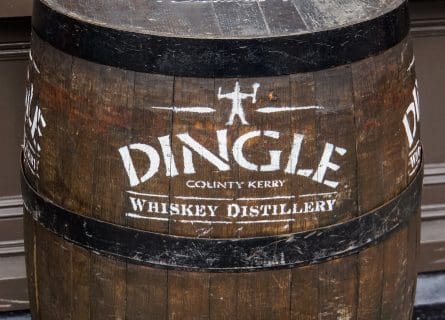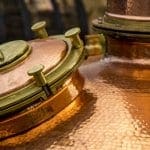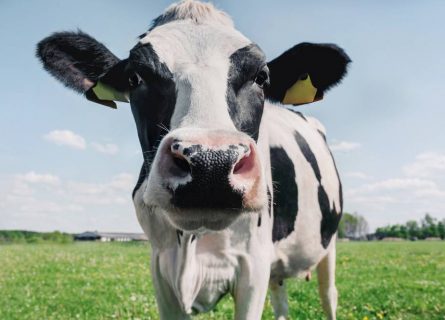Dingle Travel Guide
Dingle: Ireland's Quintessential Gem - Historic Charm, Coastal Splendor, and Festive Spirit Await You
Dingle heads the list of places to see for many visitors to Ireland. One of the country’s prettiest and most unspoiled small towns, it has enjoyed a long and sometimes difficult history. Famous for its archaeological monuments, spectacular coastline, thriving fishing port, and quaint pubs, Dingle justifiably attracts visitors worldwide. Packed with craft shops, seafood eateries, and cafes, you are also amidst dramatic mountains and wild coastlines. The Quayside buzzes with life in the summer, with an atmosphere of good-natured revelry in its many bars and restaurants. With the added attraction of an important annual food festival in October, it’s not hard to see why many visitors return to Dingle year after year.
Dingle and the surrounding Peninsula contain a wealth of archaeological monuments that testify to the fact that a thriving settlement existed long before the Normans arrived in 1169. We know that it was inhabited during the Stone and Bronze age and that early Christian monasteries existed in the 6th Century. Today, there are over 30 monastic sites along the Peninsula, evidence that Christian Monks traveled to this remote corner of the world to preach their religion across Ireland. This stable development was interrupted by the arrival of the Vikings in the 9th Century.
The Viking and Norman Influence
These fearsome warriors from Scandinavia plundered many monasteries, and their repeated raids took a heavy toll on the settlements. However, they also set up important trade routes and built towns throughout Ireland. After their influence waned, the next visitors to Ireland were the Normans, who founded Dingle as we know it today in the 13th Century. After conquering the country, they needed ports along the coast to facilitate essential trade. Dingle was located on the perfect site, so the town was born.
The town was developed by the Fitzgerald and Rice families, who promptly set about building the second-largest port on the west coast of Ireland. Dingle quickly capitalized on its enviable position, and trade flourished with Spain and France. It became one of Ireland’s most important trade centers, not to mention a destination of religious importance in the 15th and 16th centuries. In 1529, Thomas Fitzgerald, the 11th Earl of Desmond and the ambassador of Charles V of Spain signed the Treaty of Dingle, guaranteeing free trade and cooperation between the two Catholic countries.
The town became a major embarkation port for pilgrims wishing to travel to the shrine of Saint James at Santiago de Compostela in Northern Spain. A church was even built to honor the Saint, benefiting from Spanish sponsorship!
Conflict and Charter
The 16th Century was a time of great growth and conflict for the inhabitants of Dingle. On 17 July 1579, James FitzGerald landed a small fleet of ships in Dingle to take control of the town away from his cousin. He died not long after his arrival, however, from the forces of his cousin. The town also suffered greatly during the Nine Years’ War, a series of conflicts between the Irish chieftain and their English oppressors, and was burnt or sacked on more than one occasion. This series of rebellions and counter-rebellions convinced the English Queen, Elizabeth, to grant the town a charter in 1585. With her success, James I finally integrated the charter in 1607. The town became a parliamentary Borough and was protected by a strong wall to ward off would-be invaders of this very valuable port in the realm.
The mid-17th Century saw greater political stability, as the Dingle Peninsula was controlled by Lord Ventry, who had his family residence at Burnham Estate. After an initial slow start, the region’s economic recovery gathered speed in the 18th Century; the wealthy landowner Robert Fitzgerald was largely responsible for this. He developed a flourishing linen industry in Dingle; by 1755, it was worth over £60,000! Sadly, the industry died after the industrial production of Cotton in Great Britain became commonplace, Ireland could not compete, and the Linen trade was all but extinct by the mid-19th Century.
Dingle suffered greatly from losing its Linen Industry but was saved from economic disaster by its thriving fishing port. In the 1870s, the fishing trade expanded, and the authorities built an impressive infrastructure, including a pier and maritime facilities. In 1891, Dingle was connected to the Irish railways, and a thriving canning and fish-curing industry developed that was invaluable to the town’s residents. This stability and growth was tragically accompanied by the great potato famine of 1845-49.
Many Irish citizens, over 1 million, fled to America in search of a better life during these difficult times—those who stayed faced extreme poverty, hardship, and squalor. In Dingle alone, up to 5,000 people died, and no part of the Peninsula escaped the ravages of the famine despite the income from its fishing trade.
20th Century Challenges and Prosperity
Ireland experienced great turmoil and social upheaval in the 20th Century. Dingle is located in County Kerry, which saw more than its fair share of conflict during the Irish War of Independence and Civil War. One of the conflict’s key events was the Siege of Tralee in November 1920. The British-supported Black and Tans police brigade placed the town of Tralee under curfew for a week, burning homes and killing many innocent civilians in retaliation for a previous incident where the Irish Republican Army (IRA) had killed five police officers the night before. Incidents like this continued to blight Ireland until the Irish declaration of an Independent State in 1922.
Dingle played a minor role during World War I, although the nation got a taste of the horrors of World War I when The Lusitania passenger ship was sunk off the Irish coast in 1915. This atrocity spurned more young men from all over Ireland to become involved in the war effort, and many young men would never return home.
A period of stability followed until the onset of the Second World War, when many Irish troops lost their lives in Europe. Following the war’s end, in the 1950s, Dingle benefited from trade with Europe as their economies recovered, and what was formerly one of the poorer members of the European Union has become one of its success stories. EU subsidies improved the transport infrastructure, and Dingle, like many small towns in Ireland, has shared in this prosperity, benefiting from the era of the so-called ‘Celtic Tiger’ in the 1980s as Ireland enjoyed rapid economic growth and prosperity, so the town’s tourist attractions and visitors multiplied. Local time residents would have scarcely recognized Dingle as it is today; a once remote and sleepy town has been transformed into a vibrant tourist center and important fishing port. Be forewarned; the quick-witted humor and incredible unspoiled beauty of this part of Ireland is addictive – so be prepared to pay a visit more than once!
-

Dingle Whiskey, One of Many New Brands in Recent Year Gastronomy & Wine
Restaurants in Dingle specialize in offering the freshest and best quality seafood for miles around. Visitors travel far and wide to sample locally caught Lobster and other delicacies! The annual Dingle Food Festival, generally held the first weekend in October, is going from strength to strength. The quayside is the place to head for food and some fun after dark; a night spent in Dingle’s many pubs is an experience that all tourists relish.
Highlights
-
Gallarus Oratory
Dingle is the ideal base for exploring the scatted archaeological remains of the Dingle Peninsula. The most fascinating site is the Gallarus Oratory, north-west of Dingle. This dry-stone church, shaped like an upturned boat, as built between the 6th and 9th centuries. The Iron Age Fort of Dunbef, west of Dingle is also worth a look.
-
The Blasket Centre
Opened to celebrate the unique literary achievement of the inhabitants of the tiny island of Blasket, the museum is situated on the tip of the spectacular Dingle Peninsula. Visitors are guided through their language, culture and tradition.
-
Dingle Oceanworld Aquarium
One of Ireland’s biggest and most visited aquarium, OceanWorld showcases an incredible variety of species that live in the waters around the Dingle Peninsula.
Recommended for you
More information
If you would like us to customize an exclusive luxury tour, contact us and let us know your travel plans. We offer luxury food and wine tours for private groups of a minimum two guests. In addition, all of our private, chauffeured tours are available year-round upon request.







